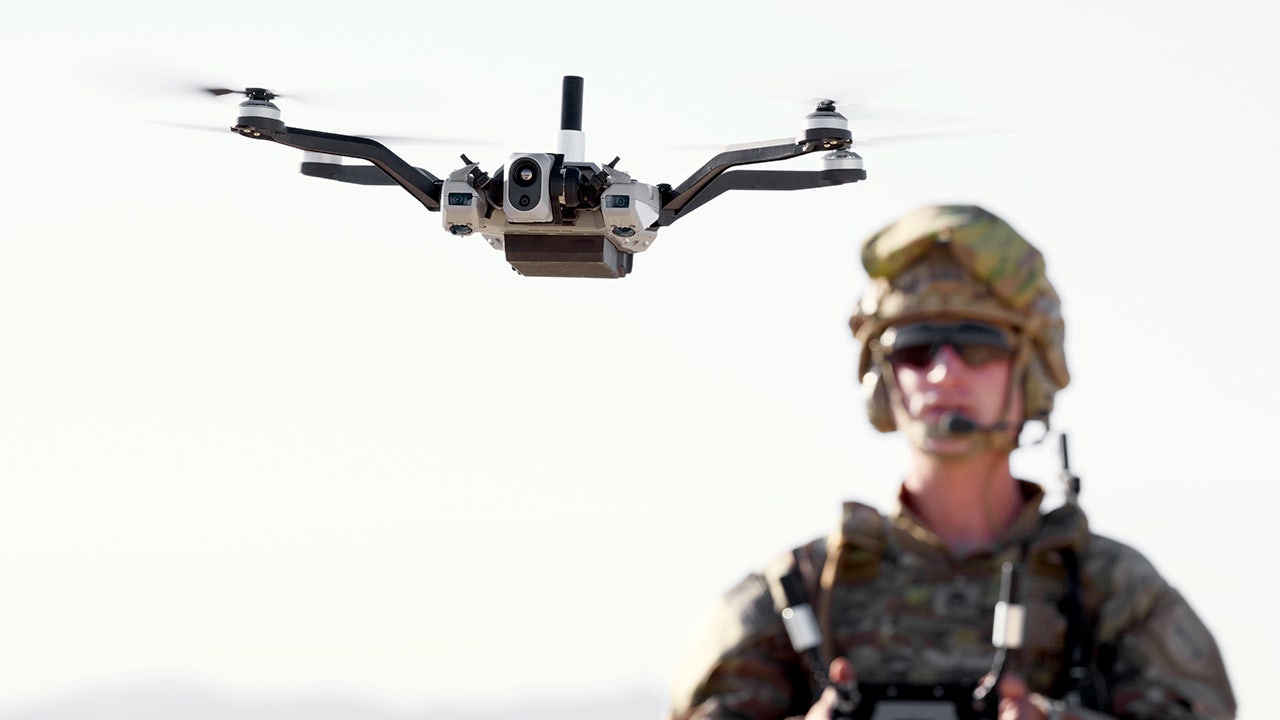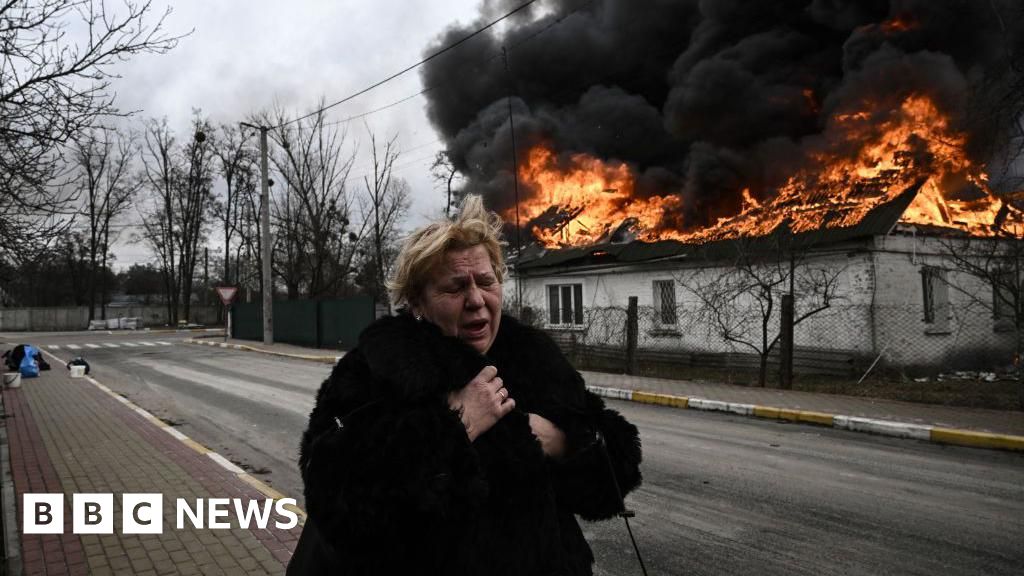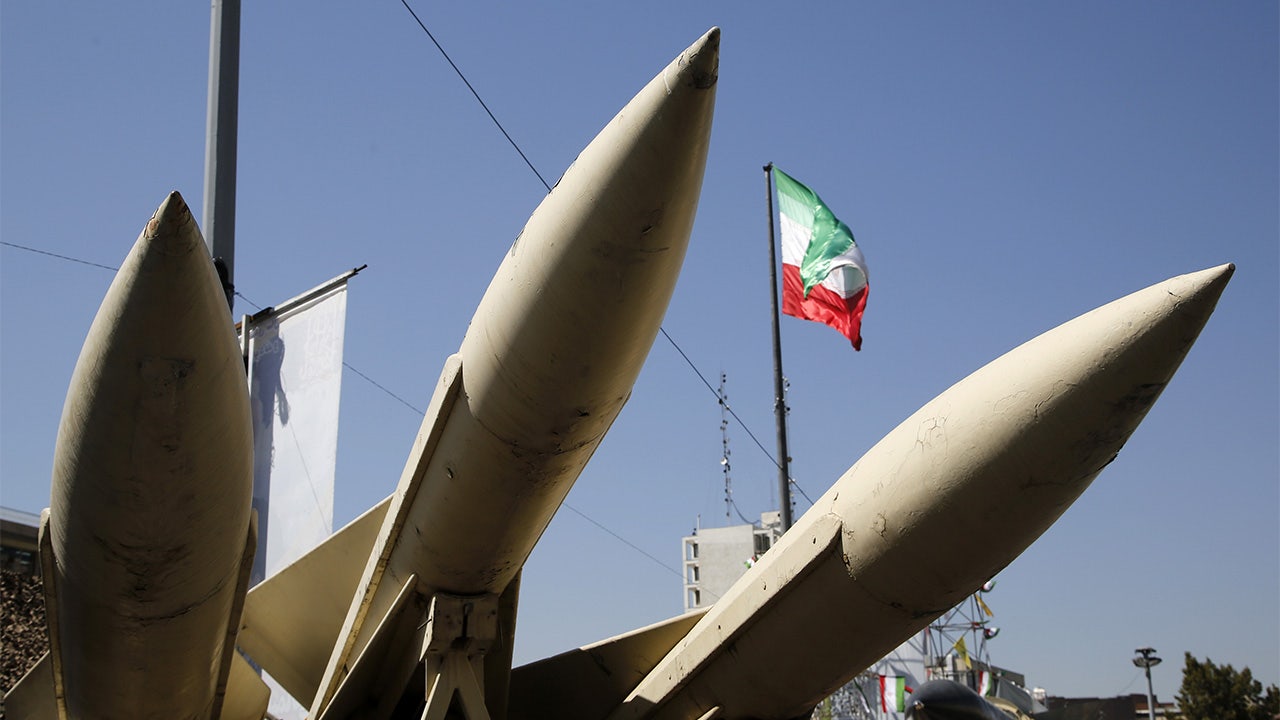World
Biden lets Ukraine launch long-range missiles into Russia. What’s it mean for the war?
What does Biden’s policy change mean for the war in Ukraine?
President Biden lifted a ban on Ukraine using U.S.-provided long range missiles on Russia. What will that mean going forward for the war?
In a major change, President Joe Biden has lifted a ban on Ukraine using U.S. long-range missiles to strike targets deep inside Russia, according to reports.
Ukraine could carry out the first strikes using ATACMS, U.S.-provided long-range missiles, in the coming days, three sources told Reuters.
Ukrainian President Volodymyr Zelenskyy and some in Washington have long pushed for the U.S. to greenlight the long-range strikes amid past concerns the move would involve the U.S. more directly and escalate the 999-day-old invasion.
Although the White House has yet to officially announce the policy change, Deputy National Security adviser Jon Finer cited the deployment of more than 10,000 North Korean troops to join Russia’s forces in the war, calling it “a significant Russian escalation that involves the deployment of a foreign country’s forces on its own territory.”
“The United States has been clear that we would respond to that. We’ve been clear to the Russians that we would respond to that,” Finer said Monday.
Policy reversal
The Biden administration has so far barred Ukraine from using the missiles to strike deep into Russian territory.
Its hesitation stemmed from fears that allowing Ukraine to carry out the strikes would involve the U.S. more directly in the conflict and provoke a harsh response from Putin, who has long threatened to deploy nuclear weapons in the conflict.
The Ukrainian military needs Pentagon assistance to launch ATACMS at their longest range. Putin has said that would amount to direct U.S. involvement in the war.
Kremlin Spokesman Dmitry Peskov told reporters on Monday that if the missiles are used to strike targets “deep” inside Russia, then it could lead to a sea change in relations with the West, state media reported.
In September, amid mounting speculation the U.S. was mulling a policy change, Putin said it would constitute the “direct involvement of NATO countries, the United States and European countries in the war in Ukraine.”
This would, Putin cautioned, drastically alter the nature of the conflict, and Russia would be forced to take “appropriate measures” in response. Putin did not specify what those measures would be.
In October, Putin changed Russia’s nuclear doctrine, saying Russia’s defense ministry would offer a “range of responses” if NATO policies on long-range strikes changed.
What the conflict abroad means for Americans: Sign up for USA TODAY’s Russia-Ukraine crisis newsletter.
What are ATACMS?
ATACMS − Army Tactical Missile Systems – are Lockheed Martin-manufactured missiles with a range of up to 190 miles. In July, the Army awarded Lockheed Martin a $226 million contract to produce the missile systems.
ATACMS are already in the hands of Ukraine’s military, which the U.S. has allowed to strike targets inside Russia close to the border.
ATACMS “are incredibly costly,” Pentagon spokesperson Sabrina Singh told reporters on Monday.
“They are in limited supply, so we’re not going to dip below our own readiness levels,” she added.
What’s at stake
Military experts and officials say Ukraine’s use of the powerful long-range U.S. weapons may enable Kyiv to damage military targets including supply lines, and troop and weapons systems far from its border. It is not clear whether Ukraine’s use of ATCAMS would fundamentally alter the course of the war.
“A decision of some importance has been made, but we are still a long way from knowing just how important it will be,” Phillips O’Brien, an American military historian at the University of St. Andrews, Scotland, wrote in his Ukraine-focused newsletter Sunday night.
Ukraine could use the missiles to hit Russian bases farther from the Ukrainian border that Russia relies on to launch airstrikes and ground attacks. Up to now, Ukraine has lacked the tools to strike those bases, Fred Kagan, a senior fellow and director of the critical threats project at the American Enterprise Institute, previously told USA TODAY.
“The more that the Ukrainians are able to strike these perfectly legitimate military targets that the Russians are using to attack Ukraine, the more countermeasures the Russians have to take that reduce the effectiveness of Russian military action,” he said.
Kagan cited a Ukrainian strike on a Russian arsenal around 240 miles from the border in September that demolished several months’ worth of ammunition.
Singh said long-range missiles likely would not be able to reach specific Russian airfields. “They have moved those out of the ATACMS range, so that wouldn’t have an impact,” she said.
Allowing the strikes could “really matter” if it signals the start of a “general expansion of targeting, allowing the Ukrainians to hit many military targets in Russia,” O’Brien said.
O’Brien added Biden’s move would be a “damp squib, short-term decision” if Kyiv is only permitted to strike targets “just around Kursk” – a region Ukraine occupied over the summer – has a limited supply of ATACMS and President-elect Donald Trump eventually reverses course.
“It will help now around Kursk, but that’s about it,” he said.
Jennifer Kavanagh, a senior fellow and director of military analysis at Defense Priorities, said being able to carry out the long-range strikes wouldn’t meaningfully improve Ukraine’s position in the war.
Supplies of ATACMS are limited, and there are not many targets they could hit, she said. “Ukraine’s problem right now isn’t lack of weapons or type of weapons, it’s manpower, and Russia just has so many more people, even putting aside the North Korean forces,” she said.
Does the move send a message to Trump?
The move by the Biden administration comes weeks after Trump’s sweeping election victory. Trump has signaled he would cut or eliminate U.S. aid to Ukraine.
The U.S. still has $9 billion in approved aid to Ukraine, which it has promised to deliver by Jan. 20, when Trump takes office.
“President Biden will have the opportunity over the next 70 days to make the case to the Congress and to the incoming administration that the United States should not walk away from Ukraine, that walking away from Ukraine means more instability in Europe,” National Security Adviser Jake Sullivan said on CBS’ “Face the Nation” last week.
Allowing long-range strikes in Russia could have a political impact in the U.S., according to Matthew Savill, military sciences director at the Royal United Services Institute.
“The Ukrainians need to convince the incoming U.S. administration that they are still worth backing,” he said in a statement on Monday.
Kavanagh said Ukraine launching long-range strikes into Russia in the two months before Trump is inaugurated could provoke Putin to intensify his assault on Ukraine.
“Putin has an incentive to try to increase his leverage and his bargaining position as much as possible,” she said. “He has no incentive to be restrained in his actions towards Ukraine.”
Pressure increases on European allies
The decision could put pressure on the U.K. and France to take down their own restrictions on Ukraine using air-launched cruise missiles they have provided for long-range strikes.
The U.K. has provided Ukraine with Storm Shadow missiles, while France has given Ukraine SCALP missiles. They can’t reach as far as ATACMS – the range of both is around 155 miles.
Although neither country has officially announced a policy change, both have said allowing long-range strikes is on the table.
“We openly said this was an option that we would consider if it was to allow to strike a target from where Russia is currently aggressing Ukrainian territory,” Jean-Noel Barrot, France’s foreign minister, told reporters ahead of a European Union meeting in Brussels.
Other European leaders and U.S. allies chimed in with support for the decision.
“This decision was very necessary… Russia sees that Ukraine enjoys strong support and that the West’s position is unyielding and determined,” Polish President Andrzej Duda said on Monday. “It’s a very important, potentially decisive moment in this war.”
Germany holds back missiles
The decision has caused European allies of the U.S. to chafe at Germany, which said months ago it would not allow Ukraine to use German long-range Taurus missiles.
On Friday, German Chancellor Olaf Scholz spoke with Putin for the first time in almost two years, ending Putin’s isolation from talks with European leaders and provoking jabs from other NATO leaders.
Scholz said he called on Putin to withdraw Russian troops and negotiate with Zelenskyy.
But Zelenskyy slammed the call as opening a “Pandora’s box” by stymieing Europe’s efforts to isolate Putin. “This is exactly what Putin has long sought. It is critical for him to weaken his isolation, as well as Russia’s isolation, and to hold mere talks that will lead nowhere,” he said in a statement posted to X, formerly Twitter.
The Kremlin suggested Germany made the diplomatic gesture to pursue an energy deal with Russia. Before the war began, around a third of German oil and gas imports came from Russia, and Europe’s efforts to cut off Russia economically have taken a toll on Germany.
State of the war in Ukraine
Nearly three years into the war, neither Ukraine nor Russia has achieved a full-on military breakthrough. Russia still occupies almost 20% of Ukraine and an estimated 3.5 million Ukrainians live under Russian occupation.
For the last year, Russia has appeared to hold the initiative in southern and eastern Ukraine, according to Mykola Bielieskov, a military research fellow at the National Institute for Strategic Studies in Kyiv. Russia’s military has meanwhile continued to target Ukrainian civilian infrastructure with massive missile and drone attacks. These attacks have hit apartment buildings, schools and energy facilities.
Moscow also holds the upper hand in terms of military recruits, though the fact that it’s had to persuade North Korea to provide additional forces and weaponry may signal that it is both running out of personnel and supplies and it’s not willing to risk, for political reasons, another general mobilization within Russia, where the war is not popular.
Britain’s Ministry of Defense previously reported that about 1,200 Russian troops were dying every day in September, a record casualty rate since the start of Moscow’s invasion in February 2021.
For Ukraine, the past four months were the deadliest of the war so far, and more people died in September than any other month this year, with 208 people killed and 1,220 injured, according to Humanity & Inclusion. That month, 45% of those killed were over the age of 60.
The Washington-based Institute for the Study of War noted in a Nov. 16 assessment that Ukraine’s use of drones has played a role in “constraining Russian mechanized maneuver and preventing Russian forces from fully exploiting Ukraine’s ongoing manpower constraints.”
Contributing: Francesca Chambers, USA TODAY; Reuters










